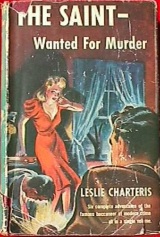Dullsville

Blondie of the Follies (1932)
It is possible I have never seen a movie with more ups and downs in story quality than Blondie of the Follies. At the movie’s opening, it becomes immediately clear that the directorial quality of the flick is on the low side and our characters are hard to immediately relate to.
Blondie (Marion Davies) and Lottie (Billie Dove) live in the same low-rent, uptown Manhattan apartment building and are friends, sort of. Lottie is about to leave with some hot shot men and introduces Blondie, who immediately insults one and storms off. Minutes later the two girls are in an all-out brawl. When Lottie informs her “friend” that she is getting a job in a burlesque joint in midtown, Blondie begs her to stay in touch.
Months later Lottie –now going by the false name Lurlene– is playing the sophisticated socialite, enjoying a swell apartment paid for by a millionaire sweetheart. She is appearing in the follies and opts to deliver a gift to her family on Mother’s Day. While there, Lottie and Blondie reunite in a positive way and the latter joins her friend in an immediate visit of her fancy digs. There she meets the millionaire: Larry Belmont, played by veteran rich cad Robert Montgomery. Larry is immediately interested in the blonde and despite Lottie’s desires to send her home, he insists on taking Blondie to the follies show that night.
Taking Blondie backstage during the show, Larry also secures a job for the girl. Next they drop in at a neighboring speakeasy where Blondie has her first experience with liquor. She is deposited by the millionaire on her parent’s doorstep some time after dawn, much to her ill father’s (James Gleason) chagrin. Blondie immediately flees back to Lottie’s apartment –despite the growing tension/rivalry between them– to pursue her new career.
When Lottie informs the girl, however, that she is in love with Larry, Blondie agrees to back off. She instead goes along with an older, oil tycoon, who establishes a posh residence for the girl. Larry, meanwhile, is stuck on Blondie and breaks it off with Lottie. Months later, Blondie orchestrates a reunion between the former lovers in the hopes of reuniting them. It is then Larry hints he has only fallen for one girl, and it wasn’t Lottie. Blondie refuses to see Larry, and the dames continue their extravagant lives in and out of the follies.
When Larry prepares to leave for France, he insists on seeing Blondie before his departure. Lottie catches word of this and tries to flirt her way into a boat ticket of her own. Seeing Blondie with the man, however, sends Lottie into a rage thinking her friend has not kept her word about staying away from the gent. The fight plays out on stage when Blondie goes flying into the orchestra pit, breaking her leg.
Now ready to head home and forget the glamorous life, Blondie bids adieu to Lottie, Larry and others at a party. Her leg is disfigured from the break and she is now fit to be no man’s wife, she thinks. Days later, Larry turns up at the low-income flat with a slew of doctors who insist they can rebreak and properly mend the leg. Only now does Blondie concede to marry her millionaire.
The first portion of Blondie of the Follies, during which our two frienemies, to coin a term, have multiple ups and downs and Blondie gets her job, is lousy. Montgomery stands out as the worst ass of his career roles as it becomes apparent he knows all of the girls in the follies and cares for none of them. Only around the time he breaks up with Lottie does Larry become something more genuine to the audience. From here he even goes through periods of endearing romance that make the picture feel like it is on track for a great romantic ending. The writers let us down, however, with Blondie’s pathetic about-face on her anti-Larry stance. She never particularly convinces us she pines for the man, and her reason for agreeing to the union –that the man will fix her bum leg and make her marriage-worthy– is regrettable.
The one thing that does not vary throughout the movie is the acting quality. Montgomery makes no false move, and Davies is as fun and humorous as ever. Dove plays a marvelous snobby bitch and is purely contemptible in nearly every moment of the film, even when she is repeating, “I like you Blondie; I always have.” The relationship between the girls is obnoxious. We feel Lottie never truly likes Blondie, yet the other is constantly moving between love and hate and assuming the same of her pal. Whereas Lottie never has Blondie’s best interest at heart, the latter does mostly maintain her promises to Lottie.
I might have given Blondie of the Follies a better grade if not for that disappointing ending. There is nothing more irritating than a romantic movie that falters at the end of the emotional crescendo. The couple does not even kiss to seal the deal.
Filed under: Comedy, Drama, Romance | Tagged: Billie Dove, Dullsville, Edmund Goulding, James Gleason, Marion Davies, Robert Montgomery | Leave a comment »




















